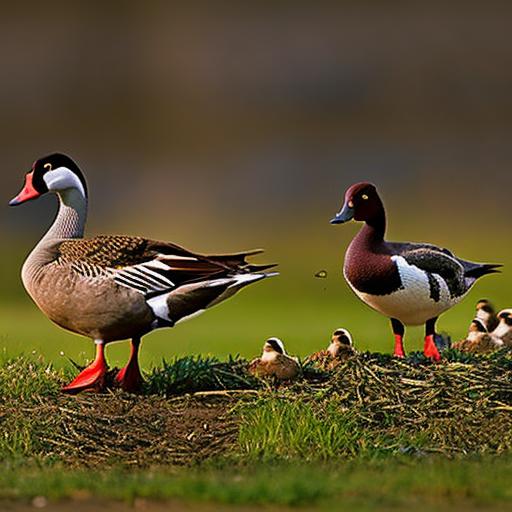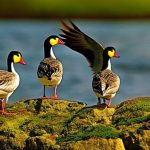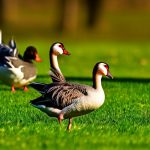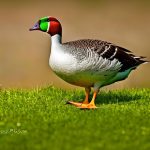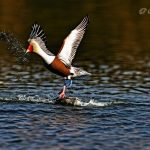Geese and ducks are known for their impressive migratory patterns, traveling thousands of miles each year in search of warmer climates and better feeding grounds. These birds typically migrate in large flocks, following traditional routes that have been passed down through generations. Migration is a natural behavior for these birds, driven by instinct and the need to survive. However, in some cases, the presence of geese and ducks in certain areas can become a nuisance, leading to property damage and health concerns. As a result, many property owners and land managers seek ways to deter geese and ducks from settling in their area.
Key Takeaways
- Geese and ducks migrate for various reasons, including breeding, weather changes, and food availability.
- Natural methods for deterring migration include altering the habitat to make it less attractive for the birds.
- Physical barriers such as fences and netting can be used to prevent geese and ducks from accessing certain areas.
- Providing adequate food and shelter in non-migratory areas can help deter geese and ducks from migrating.
- Scare tactics such as predator decoys and motion-activated devices can be effective in deterring migration.
Natural Methods for Deterring Migration
There are several natural methods that can be used to deter geese and ducks from migrating to a specific area. One effective method is to modify the landscape to make it less attractive to these birds. This can be done by removing or reducing the availability of water sources, such as ponds or lakes, which are attractive to geese and ducks for feeding and nesting. Additionally, planting tall grasses or shrubs along the shoreline can create a barrier that makes it difficult for these birds to access the water. By altering the habitat in this way, property owners can make their land less appealing to migrating geese and ducks, encouraging them to move on to more suitable areas.
Another natural method for deterring migration is to introduce natural predators to the area. Predators such as coyotes, foxes, or even domestic dogs can help keep geese and ducks at bay by creating a sense of danger and prompting the birds to seek safer locations. This method can be effective in rural areas where predators are already present, but may not be suitable for urban or suburban environments. Additionally, introducing predators should be done with caution and consideration for the safety of other wildlife and domestic animals in the area.
Use of Physical Barriers
Physical barriers can be an effective way to prevent geese and ducks from settling in unwanted areas. Fences or netting can be installed around bodies of water to prevent access by these birds. This method is particularly useful for protecting golf courses, parks, and other public spaces where geese and ducks can cause damage to landscaping and pose a health risk due to their droppings. Additionally, floating barriers can be used on bodies of water to create an obstacle that discourages geese and ducks from landing and feeding.
Another physical barrier that can be used to deter migration is the installation of bird spikes or wire deterrents on flat surfaces such as rooftops or ledges. These deterrents make it difficult for geese and ducks to land and roost, encouraging them to seek alternative locations. When using physical barriers, it is important to ensure that they are installed in a way that does not harm the birds or other wildlife in the area.
Providing Adequate Food and Shelter
One way to discourage geese and ducks from migrating to a specific area is to ensure that they have access to an abundance of food and suitable shelter elsewhere. By providing alternative feeding areas with ample food sources, such as grassy fields or agricultural lands, property owners can encourage these birds to settle in more suitable locations. Additionally, creating nesting structures or providing nesting materials in alternative locations can help redirect geese and ducks away from unwanted areas.
Another approach is to manage the vegetation on the property in a way that makes it less attractive to geese and ducks. By mowing grassy areas regularly and removing tall grasses or shrubs near bodies of water, property owners can create an environment that is less appealing to these birds for feeding and nesting. This method can be particularly effective when combined with other deterrent strategies, such as natural habitat modification or scare tactics.
Implementing Scare Tactics
Scare tactics can be an effective way to deter geese and ducks from settling in unwanted areas. One common scare tactic is the use of trained dogs to patrol the property and chase away these birds. The presence of a dog can create a sense of danger for geese and ducks, prompting them to seek safer locations. Additionally, the use of motion-activated sprinkler systems or noise-making devices can startle these birds and encourage them to move on.
Another scare tactic that can be effective is the use of predator decoys, such as plastic owls or coyotes, placed strategically around the property. The sight of these decoys can create a sense of danger for geese and ducks, prompting them to avoid the area. However, it is important to regularly move these decoys around to prevent the birds from becoming accustomed to their presence.
Utilizing Sound and Visual Deterrents
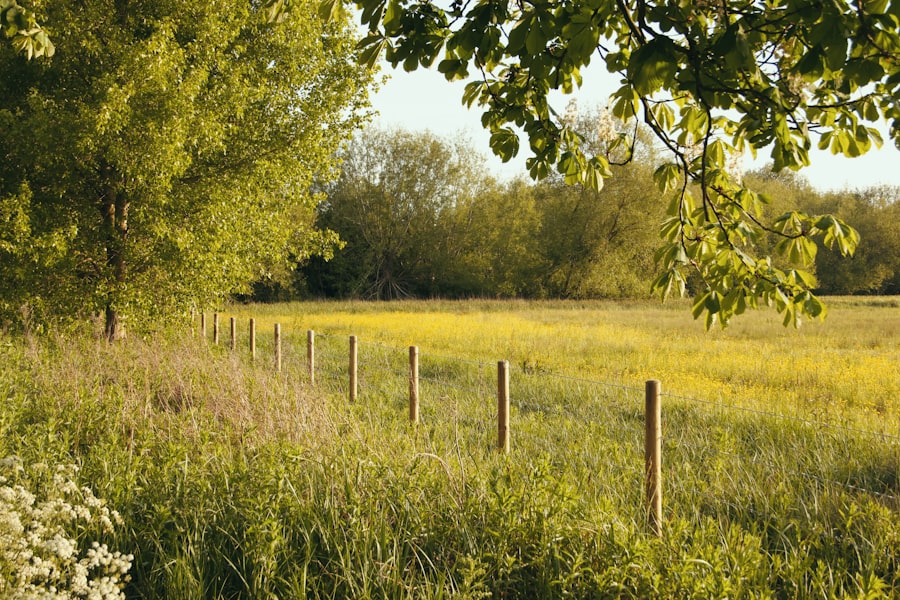
Sound and visual deterrents can also be effective in deterring geese and ducks from migrating to specific areas. One common method is the use of propane cannons or other noise-making devices that emit loud sounds at regular intervals. These sounds create a sense of danger for these birds, prompting them to seek quieter locations. Additionally, the use of reflective tape or balloons with predator eyes painted on them can create visual deterrents that make geese and ducks feel threatened.
Another effective sound deterrent is the use of distress calls or predator calls played through loudspeakers or electronic devices. These calls mimic the sounds of distressed or predatory birds, creating a sense of danger for geese and ducks and prompting them to move on to safer locations. When using sound and visual deterrents, it is important to vary the methods used regularly to prevent these birds from becoming accustomed to them.
Legal and Ethical Considerations for Preventing Migration
When implementing strategies to deter geese and ducks from migrating to specific areas, it is important to consider the legal and ethical implications of these actions. In many regions, these birds are protected under wildlife conservation laws, making it illegal to harm or harass them without proper permits or authorization. Property owners should familiarize themselves with local regulations and seek guidance from wildlife authorities before implementing any deterrent strategies.
Additionally, it is important to consider the ethical implications of deterring migration for geese and ducks. These birds are simply following their natural instincts in search of suitable habitats and food sources, and efforts should be made to minimize harm while addressing any issues they may cause. Property owners should strive to find humane and non-lethal methods for deterring migration, taking into consideration the well-being of these birds and other wildlife in the area.
In conclusion, deterring geese and ducks from migrating to specific areas requires a multifaceted approach that takes into consideration the natural behaviors of these birds as well as legal and ethical considerations. By utilizing natural methods, physical barriers, scare tactics, sound and visual deterrents, property owners can effectively discourage these birds from settling in unwanted areas while minimizing harm and promoting coexistence with wildlife.
Certainly! Here’s the paragraph with the related article included as an tag:
When it comes to managing waterfowl on the farm, understanding their natural behaviors is crucial. Farmers often face the challenge of keeping geese and ducks from migrating, especially during mating season. To address this issue, it’s essential to consider various strategies for managing waterfowl on the farm. For more insights into duck mating season and breeding practices, check out Poultry Wizard’s informative article on duck mating season. Understanding the mating behaviors of ducks and geese can help farmers develop effective methods for keeping them from migrating while ensuring their well-being. For more valuable resources on poultry management, visit Poultry Wizard.
Meet Walter, the feathered-friend fanatic of Florida! Nestled in the sunshine state, Walter struts through life with his feathered companions, clucking his way to happiness. With a coop that’s fancier than a five-star hotel, he’s the Don Juan of the chicken world. When he’s not teaching his hens to do the cha-cha, you’ll find him in a heated debate with his prized rooster, Sir Clucks-a-Lot. Walter’s poultry passion is no yolk; he’s the sunny-side-up guy you never knew you needed in your flock of friends!

